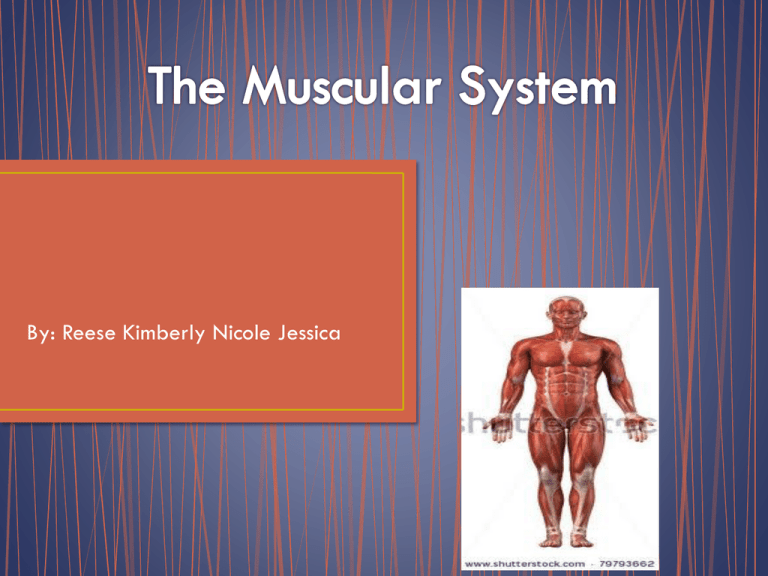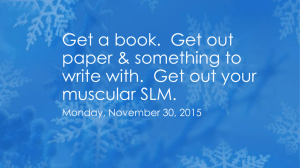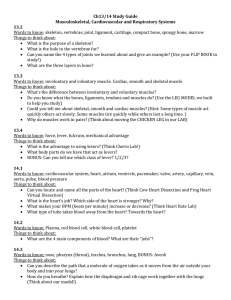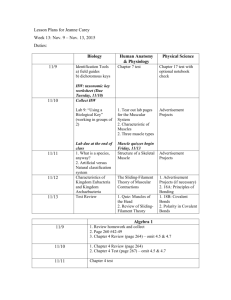The Muscular System
advertisement

By: Reese Kimberly Nicole Jessica • One big function of the Muscular System is movement. Skeletal muscles are arranged in pairs on opposite sides of joints. As one muscle contracts, the opposing muscle must relax to cause movement. This movement is commonly referred to as locomotion. • Generating heat is another function. The muscular system responds to a reduction in core body temperature by shivering. Shivering is an involuntary response in which muscles contract rapidly to generate heat. The colder you are, the more you shiver. Shivering muscles demand an increase in oxygenated blood, which is drawn from nonessential organs to increase your body temperature. • The muscular system also maintains posture. Such as keeping your head up, pulling your shoulders back and supporting your spine. Muscles involved in posture generate low amounts of force for long periods and are often referred to as tonic muscles. Tonic muscles do not generate much movement but instead hold your limbs in position by generating isometric contractions. • There are 3 types of muscle tissue in your body. • The first, Cardiac muscle is found in the heart and nowhere else. It can contract time after time without getting tired. Cardiac muscle is involuntary • Smooth muscle is found in organs of the digestive system and blood vessels. It ‘s lining in the stomach causes it to twist and turn to mix food with digestive juices. Smooth muscle is also involuntary. • Skeletal muscle is voluntary. You can control these types of muscles. Only skeletal muscles are responsible for making the body move. These muscles attach to your bones to cause movement. • The muscular system works with the Circulatory system. Without the muscular system the heart would not be able to pump blood. • The muscular system interacts with the digestive system in several places. The muscles of the jaw mash food, and then muscles along the esophagus move food from the mouth to the stomach. Muscles along the intestines move digesting food along. • The main interaction between the muscular system and the respiratory system is the diaphragm: a large, flat muscle that separates the lungs from the intestines. It is the movement of the diaphragm that causes the lungs to inflate and deflate. • There are muscles in the roots of your hair that give you goose bumps. • It takes 17 muscles to smile and 42 to frown. • The hardest working muscle is in the eye • Muscles can account for 40% of the body's weight. • The smallest muscles are in the middle of the ear. • Books: The human body – Christina Coster-Longman The visual dictionary of the human body- Mary Lindsay Websites: Ehow.com








